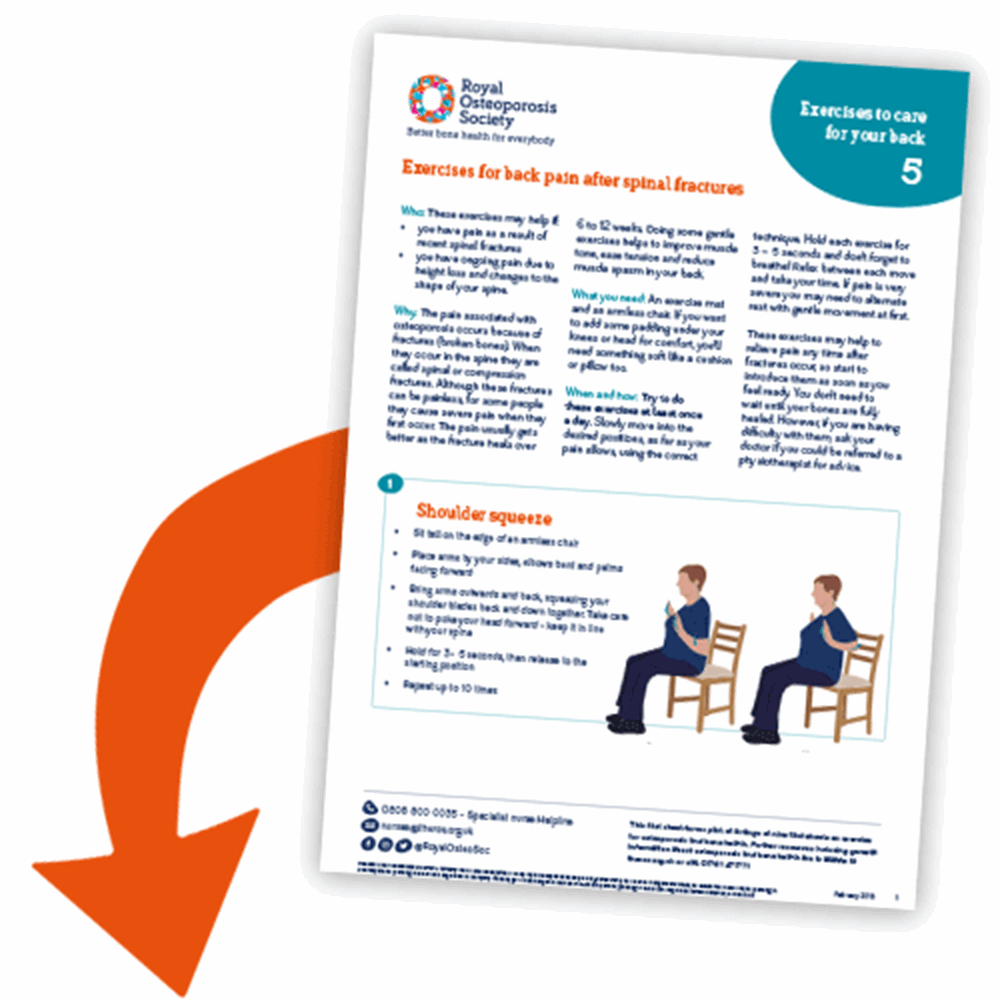
What exercises can you do for back pain after a spinal fracture?
If you have a spinal fracture, doing some gentle exercise can help improve the pain. Although spinal fractures can be painless, for some people they cause severe pain when they first happen. The pain usually gets better as the fracture heals over 6 to 12 weeks. These exercises may help improve muscle tone, ease tension and reduce muscle spasms in your back.
The pain associated with osteoporosis occurs because of fractures (broken bones). When they happen in the spine they are called spinal fractures. You may hear these fractures described as compression or vertebral fractures.
To practise these exercises, follow the film or download the fact sheet, 'Exercises for back pain after spinal fractures'.

Download our fact sheet
Exercises for back pain after spinal fracturesThese exercises may help if:
- you have pain as a result of recent spinal fractures
- you have ongoing pain due to height loss and changes to the shape of your spine.
What you'll need
An exercise mat and an armless chair. If you want to add some padding under your knees or head for comfort, you’ll need something soft like a cushion or pillow too.
When and how
Try to do these exercises at least once a day.
Move slowly into the positions, as far as your pain allows, using the correct technique. Hold each exercise for three to five seconds and don’t forget to breathe!
Relax between each move and take your time. If pain is very severe you may need to alternate gentle movement with rest periods at first.
These exercises may help to relieve pain any time after fractures happen, so start to introduce them as soon as you feel ready. You don’t need to wait until your bones are fully healed. But, if you are finding the exercises difficult, ask your doctor to refer you to a physiotherapist for advice.
Before you start
If you are new to exercise or worried about other health problems, speak to a healthcare professional or exercise instructor.
Warm up properly before exercising to get your joints and muscles ready and to prevent injury.
If you need some extra encouragement, read the information in our fact sheet, 'About exercise for osteoporosis and bone health'. This explains the different ways that exercise and physical activity help with bone health and osteoporosis. It can help you think about how the benefits apply to you, and how the different types of exercise can help your bone health.
After exercise
Do some further cool down moves to increase your flexibility and return your breathing and heart rate back to resting levels.
 Search
Search
 Login
Login


